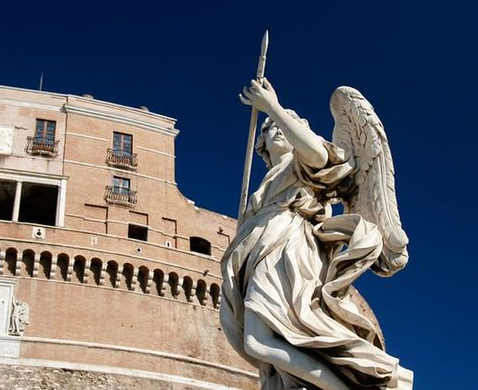(单词翻译:单击)

When I was a child in the late 1960s and early 1970s I lived in Dar es Salaam, Nairobi, and Accra and travelled across Africa, from east to west, marvelling at the range and splendour of the continent's architecture. It was not the easiest time to experience Africa's architectural glories. But I was left with an enduring desire to understand the nature of African buildings and their origins and whether they came into being through expedience, their relationship to colonial power, economics, self-belief or self-identity.
上世纪60年代末70年代初,当我还是个孩子时,我先后居住在达累斯萨拉姆、内罗毕和阿克拉。从东到西,我的足迹遍及整个非洲大陆,我为非洲建筑的丰富多样和绚丽恢宏所折服。当时并不是易于感受非洲建筑之辉煌的时期,但后来我一直希望了解非洲建筑的本质及其起源,以及在它们的发展形成过程中,方便性、它们与殖民势力的关系、经济学、自信、自我认同等因素是否起到了重要作用。
It is a passion that has never left me. In the past decade I have documented the 53 capitals of the continent in a bid to understand how regional geography and tradition transcend state boundaries. In that time I have researched the great pyramids of Giza, the temples of Luxor, Libya's Roman ruins at Leptis Magna, the stone walls of great Zimbabwe, the Buganda shrine of Uganda, the medieval Islamic architecture of Fes and Marrakech in Morocco, Ethiopia's churches carved into the rock in Lalibela and much more.
这种激情从未离开过我。过去十年间,我记述了非洲大陆53个国家的首都,以图理解区域地理和传统是如何超越国家边界的。在这段时期,我研究了吉萨的大金字塔、卢克索的神庙、利比亚大莱普提斯(leptis magna)的古罗马遗址、大津巴布韦的石墙、乌干达的布干达陵墓、摩洛哥菲斯和马拉喀什的中世纪伊斯兰建筑,埃塞俄比亚的拉利贝拉岩石教堂,等等。
Yet of all these places and more, few if any can rival the shrines and mosques of Timbuktu. Among the more famous are the 15th-century Sidi Yahya mosque and the ancient tombs of Sufi saints. Their desecration over the past week by al-Qaeda-linked militants wielding picks, hoes and, of course, guns is much more than an act of vandalism. It is, as the International Criminal Court's prosecutor says, a war crime.
然而,上述所有建筑以及其它建筑,鲜有能与廷巴克图(Timbuktu)的陵墓和清真寺相媲美的。其中比较出名的是15世纪建造的西迪叶海亚(Sidi Yahya)清真寺和苏菲派圣徒陵墓。近期,与"基地"有关联的武装分子用镐头、锄头,当然还有枪支亵渎这些古迹,这绝不仅仅是蓄意毁坏公物行为。正如国际刑事法庭(International Criminal Court)的检察官所言,他们犯下了战争罪。
The structures in Timbuktu are the remnants of the city's incarnation as one of the world's great commercial and intellectual centres. Known as the "city of 333 saints", Timbuktu was not just a desert commercial crossroads; it was also a centre of learning. Its ancient shrines and mosques include the Djinguereber mosque built from mud in 1327. It is a horizontal city; the shrines and mosques are the punctuation that articulate the skyline. The mud architecture was developed at the high point of the history of Timbuktu. It is unique to the region and represents a distinctive marriage of Islamic and desert architecture – an inimitable Sahel desert aesthetic – not to be found anywhere else in the world.
廷巴克图曾是世界重要商业和文化中心之一,这些建筑就是那个时期遗留下来的古迹。以"333位圣徒的城市"闻名于世的廷巴克图,在当时不仅是沙漠中的一个商业枢纽,还是一个学术中心。此地的古迹包括1327年以泥土建成的津加里贝尔(Djinguereber)清真寺。廷巴克图是一座呈"水平"走向的城市,陵墓和清真寺成了连接天际的符号。津加里贝尔清真寺建于廷巴克图鼎盛时期。它在这个地区是独一无二的,融合了伊斯兰艺术和沙漠建筑的特点——一种不可模仿的萨赫勒(Sahel)沙漠美学——一在全世界都是独具一格的。
In the Sahel cities, the architecture of Islam, with its domes and minarets, is breathtaking. Many times I have stood before them and marvelled at their glory. But also the fact that these civilisations chose to create their monuments out of the mud beneath their feet was an immensely powerful gesture that has resonance today. We live in an age of scarce resources, where ecology and the environment should play an increasingly fundamental role in the way we design our cities.
在萨赫勒地带的城市,带着圆屋顶和尖塔的伊斯兰建筑令人叹为观止。很多次我站在它们面前都会惊叹其壮丽。同样令我感到惊叹的是,这些文明选择用脚底下的泥土建造他们的丰碑,蕴含其中的强大力量在今天依然能够激荡人心。我们生活在一个资源匮乏的时代,因而在我们的城市规划中,生态和环境应该发挥越来越重要的作用。
Inevitably history's sharp chisel has long been chipping away at these treasures. The monuments of Timbuktu offer a compelling model embracing both the means to build and the very point of building. Mud structures are not only sustainable, but also inherently rebuildable. The Great Mosque of Djenne, further south in Mali, for example, "returns to the earth" every six months when the local population "re-mud" it after the rainy season.
历史这把锋利的凿子不可避免地侵蚀着这些宝藏。廷巴克图古迹提供了一个令人叹服的兼重建筑方法与建筑意义的模式。泥土结构不仅具有可持续性,而且便于重建。比如说,在马里廷巴克图以南的杰内大清真寺(Great Mosque of Djenne),每当雨季过后,当地人会加以"重新泥砌",让这座大清真寺每半年都"重生"一次。
So there is the faint possibility that the monuments of Timbuktu might with time be repaired and renewed. But what is happening in Mali is a stark warning that we need more than Unesco World Heritage titles to preserve our story and ensure its retelling for future generations. The latest destruction follows the attack in May on the tomb of Sidi Mahamoud Ben Amer, also in Timbuktu. Now I fear that other sites, not just in Timbuktu but in other Malian cities, are at risk.
因此,廷巴克图古迹没准儿会随着时间的推移不断得到修复和翻新。但在马里发生的事情却警示,为了保护我们的历史,让后世子孙也能够懂得历史,仅仅是联合国教科文组织世界遗产(Unesco World Heritage)的头衔是远远不够的。最近的这次破坏事件之前,西迪•马哈茂德陵墓在5月份也遭到了破坏,这座陵墓也在廷巴克图。现在我担心的是其他古迹也会有危险——不只是廷巴克图,还有马里其他城市。
Even if in time these splendours are rebuilt, their mythology will have died. They are artefacts of an ancient civilisation, not just buildings. So what could and should be done? What about the Gulf states, for example? They spend billions of dollars buying up Islamic art for their new museums, but they don't say anything when some of Islam's finest buildings are destroyed.
即使这些辉煌的建筑及时得到重建,但它们的神秘感将会消失。它们是古代文明的工艺品,而不仅仅是建筑。那么,我们能够、也应该做些什么呢?比如说海湾国家?他们花费数十亿美元购买伊斯兰艺术品,用以充实各个新建的博物馆,但当一些最精美的伊斯兰建筑遭到破坏的时候,他们却默不作声。
Making a case for the physical protection of buildings when we are unable to protect the citizens of Mali might sound precious. We must make the case for both. If we do not protect the legacies of previous generations, how can we hope that future generations will respect ours?
当我们无法保护马里居民的时候,谈论为建筑提供切实的保护听上去或许有点矫揉造作。两个方面我们都应该考虑到。如果我们不保护前辈的遗产,又如何能"奢望"后代人尊重我们将来留下的遗产呢?
The writer is the author of "Adjaye Africa Architecture" and is the principal of Adjaye Associates
本文作者是阿德迦耶建筑事务所(Adjaye Associates)所长,著有《阿德迦耶非洲建筑》(Adjaye Africa Architecture)一书。


